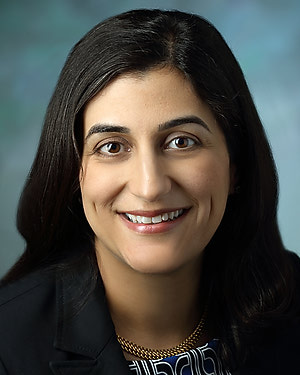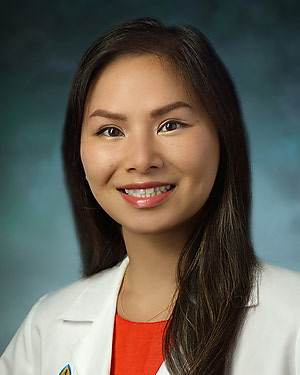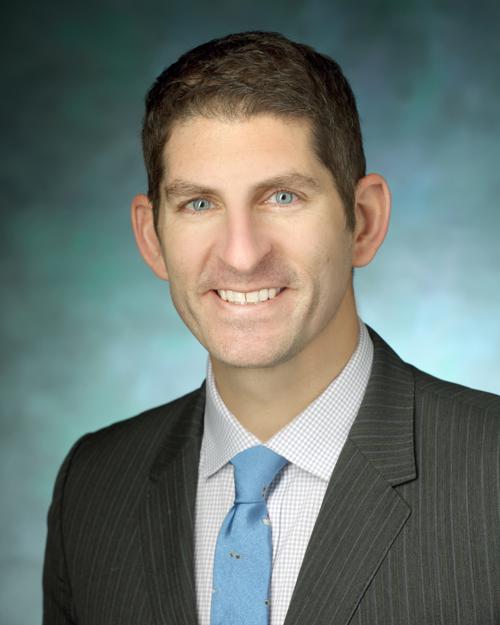-
Fatemeh Rajaii, MD PhD

- Odd Fellows Rising Professor of Ophthalmology
- Associate Professor of Ophthalmology
On This Page
-
Procedures/Offerings
Learn what services we offer at the Johns Hopkins Wilmer Cosmetic Center.
-
Meet Our Team
Meet the specialists who have devoted their careers to making patients feel and look their best.
-
Locations
Find your nearest convenient location.
Our ServicesProcedures/Offerings
-
A facelift is a cosmetic procedure designed to tighten facial muscles and stretch facial skin for a smoother, younger appearance. A facelift may take place on the face, the neck, or both. It can include a browlift, blepharoplasty (eyelids), a cheek (mid-face) lift, a lower face lift, and a neck lift.
Types of Procedures
• Cheek (mid-face) lift: Over time, the cheeks start to deflate and descend, making the laugh lines (known as nasolabial folds) more pronounced. Sagging cheeks give the impression of sadness and older age, but a cheek (or mid-face) lift will provide a more plump, youthful appearance. Many patients also choose to receive fillers in addition to the cheek lift procedure, to add volume to the cheeks and further improve the nasolabial folds.
• Small incision (lower) facelift: A traditional face and neck lift is for patients who wish to reduce wrinkles across the entire face and neck. But for those patients with aging changes affecting the lower face in particular and only mild changes in the neck, a small incision (or mini) facelift is a better option. Also known as a “weekend lift” because of the short procedure and recovery time, the mini facelift is perfect for patients looking for substantial, long lasting improvement with minimal down time.
• Neck lift surgery: A full face/neck lift is reserved for those patients having severe sagging under the chin with prominent neckbands that would not be improved with a small incision facelift alone. An incision is made underneath the chin to tighten the superficial neck muscle, called the platysma. The removal of excess skin and tightening of the lower face and neck significantly contribute to a long-lasting rejuvenated appearance.
• The SMAS plication/resection Technique: Your skin is comprised of three basic layers. There is a layer of connective tissue between the outer skin and the muscles, known as the superficial musculoaponeurotic system (SMAS for short). The goal of the SMAS plication/resection facelift is to provide a long-lasting tightening of the SMAS and the skin, in order to remove the wrinkles in the face and eliminate the jowls. Our surgeons use this technique with both the small incision and the more extensive neck lift procedures in order to provide you with a sustained, longer lasting result. A deep-plane facelift elevates this layer and lifts it for the most powerful facelift.
• Recovery from Face and Neck Lift Surgery: Recovery from face or neck lift surgery greatly depends on which type of procedure you undergo. The more extensive the surgery, the longer the recovery. Generally, the physician will remove stitches 1-2 weeks following the procedure. Bruising and swelling typically subside after a couple of weeks. Speak with your doctor for more information.
-
As we age, our eyebrows begin to droop, which results in a sad, worried, or tired appearance. Brow elevation, also known as a browlift or forehead lift, is often performed at the same time as upper eyelid surgery. Functionally, this elevates and stabilizes droopy eyebrows to improve field of vision and brightness. Cosmetic versions of this surgery can smooth wrinkles, contour the eyebrow angle/shape, and rejuvenate a patient’s appearance.
Types of browlift surgery
-
Direct browlift: This is one of the most effective and long-lasting ways to raise droopy eyebrows. An incision is made just above the brow to hide beneath brow hair or hidden within a forehead wrinkle. A strip of excess forehead skin is removed to raise the brow upward. The drawback of approach is a potential visible scar, but this method of browlift if covered by insurance when the droopy brows are obstructing vision.
- Internal brow elevation (browpexy): For patients undergoing upper eyelid blepharoplasty, the same upper eyelid incision can be used to elevate the descended brow fat and reattach it to the forehead in its original position. This elegant and effective technique removes the need for additional skin incisions and can be performed simultaneously with the upper eyelid blepharoplasty. An internal brow sculpting involves removing the excess upper eyelid skin and repositions the brow from the underside. This method is covered by insurance when it is impairing vision but does not last as long as other approaches and the lift is not as significant. It also does not smooth out wrinkles or change the angle/shape of the brow as much as the other methods.
- Trichophytic (hairline) browlift: This is a powerful, long-lasting, and “scarless” way to raise the eyebrows. An appropriate candidate should have a healthy hairline dense enough to hide the incision, which is made 3mm behind the hairline from ear to ear. Excess forehead skin is removed to lift the brows. In this process, forehead wrinkles are softened and oftentimes eliminated because of the upward stretch. This can also be combined with a hairline moving procedure to shorten tall foreheads and/or improve receding hairlines. The corrugator muscle can also be purposefully weakened with this procedure (see below). This type of browlift is cosmetic even when it is obstructing vision.
- Corrugator muscle removal: The corrugator supercilii muscles cause wrinkles to form at the top of your nose between the eyebrows. To reduce these wrinkles, our surgeons can either weaken the muscle with Botox or remove the corrugator muscles through the same incision used for the trichophytic browlift and endoscopic browlift.
- Temporal browlift: This is a modified version of the trichophytic browlift where only the tails of the brows are lifted. This cosmetic procedure is also effective, long-lasting, and “scarless.” The incision is made just at the temples rather than across the entire head. It is meant to address outer brow droop rather than raise the entire brow. It can also change brow angle/shape as desired.
- Endoscopic forehead lift: After making a few small incisions in the scalp hidden behind the hairline, the surgeon will use an endoscope (a surgical instrument with a light and camera) to view the muscles and tissues in the forehead. After making dissections through the small incisions, the entire forehead and eyebrows are lifted and stabilized to the scalp. This method improves wrinkles and is the most “scarless” approach. However, the lift is typically not as robust as the trichophytic method and can elongate foreheads. It is a cosmetic surgery not covered by insurance even when the brows obstruct vision.
Recovery from browlift surgery
Browlifts are frequently performed simultaneously with eyelid surgery (blepharoplasty). Recovery is limited by the bruising and swelling that typically involves the eyelids and can last up to 3 weeks. However, we recommend our patients to take one week off work, since in the second and third week most bruising can be covered with makeup or glasses. The recovery for brow surgery alone is faster, since forehead swelling is minimal, but a week off is still recommended. Oftentimes, sutures used for browlift surgery other than internal browlift have to be removed at the 1-2 week mark.
Some patients will experience numbness in their forehead and scalp after browlift surgery. Numbness of the forehead will typically resolve itself in a few months. Patients will be able to shampoo their hair and wash their face with soap the day following surgery.
-
-
Eyelid surgery includes different procedures, which can remove excess eyelid skin with or without fat sculpting; tighten loose, sagging eyelids; and lift droopy upper eyelids. Functionally, this can improve a patient’s field of vision and/or brighten vision. Aesthetically, it rejuvenates patients by eliminating excess skin, lower eyelid wrinkles, and lower eyelid “bags.” The surgery leads to a more youthful, well-rested appearance.
If the eyelids affect your line of sight, corrective procedures may be covered by insurance. Request an appointment with our surgeons to learn more.
What to expect during eyelid surgery
The most frequently performed eyelid procedures are:
- Upper eyelid blepharoplasty: Performed through a cosmetic lid crease incision, upper eyelid blepharoplasty allows the surgeon to remove excess skin and fat to reshape the profile of the upper eyelid. The skin of the upper eyelid is very thin, which means the incision (hidden in the upper eyelid crease) heals with no visible scarring in the great majority of patients. This surgery can also rotate lashes that are drooped downward.
- Asian blepharoplasty: This is a modified version of a regular blepharoplasty which changes the eyelid crease height and shape to turn a “creaseless” mono-lid to a “double eyelid.”
- Upper eyelid ptosis (droopy lid) repair: Droopy eyelid repair is often combined with a blepharoplasty to lift the lash line/margin of the eyelid. This can be done through the same eyelid crease incision or from the underside of the eyelid. A simple, in-office eyedrop test will help determine the approach.
- Lower eyelid blepharoplasty: The surgeon will make an incision through the pink tissue on the inside of the lower eyelids and remove or transfer the excess fat to the area between the lower eyelid and the cheek. The removal of puffiness and bags under the eyes results in a refreshed, rejuvenated appearance. If there is excess eyelid skin, an incision is made along the eyelid just beneath the lash line to remove lower eyelid skin.
- Lower eyelid tightening: Drooping, saggy lower eyelids can give a sad and/or tired appearance, as well. Lower eyelid tightening can be performed through small incisions at the side corners of the eyes or through even smaller upper eyelid incisions hidden in the outer eyelid crease. If the patient is undergoing upper eyelid surgery, the surgeon may be able to use the same incision to tighten the lower eyelids, depending on the amount of laxity.
Many people opt to have ptosis correction surgery in conjunction with upper blepharoplasty as the same upper eyelid crease incision is used for both procedures and there is no increase in recovery time.
Recovery from eyelid surgery
Both upper and lower eyelid blepharoplasty are performed on an outpatient basis. It is generally recommended that patients plan on staying home for 2-3 days after the procedure, and apply ice to the eyelids to reduce bruising and swelling. It typically takes about 3 weeks for the bruising to disappear completely, although this can be effectively covered with makeup or sunglasses. Patients should refrain from heavy lifting (over 10 pounds), bending over, and straining in the first week after surgery. Stitches are either dissolvable or removed at the 1-2 week mark after surgery.
-
As we age, wrinkles can become deeper and more noticeable. Oculofacial plastic surgeons at the Wilmer Eye Institute have a thorough understanding of facial anatomy and undergo extensive training to administer neurotoxins and facial filler safely and effectively. These injections provide a non-surgical option for wrinkle prevention and/or treatment, facial appearance modification, and overall facial rejuvenation.
Wrinkles most commonly prevented or treated with neurotoxins are in the forehead, glabella (brow frown lines), and crows’ feet. Neurotoxin injection can also provide a chemical brow lift, fix mild brow asymmetry, and smooth out strong jaw lines (square-shaped faces). Fillers can be used to add volume in the cheek area, soften the nasolabial folds and marionette lines (area in between mouth and chin), and reduce the appearance of hollow lower eyelids. Neurotoxin and filler injections can be combined to lift the corners of down-turned mouths, augment lip volume, and change lip shape.
When used regularly, both neurotoxins and fillers can decrease fine line and wrinkle formation, although both offer temporary results that can last several months up to a year or more. Consistent treatments are recommended for long-term results.
Recovery from Neurotoxins and Filler
Filler and neurotoxin injections require no to very little recovery time. Some patients may experience tempoaray bruising and/or swelling at the injection site that clears within several days. The face could develop small bumps near the injection site, but these typically subside within a few hours.
Prior to getting injections, patients should disscontinue the use of over the counter anti-inflammatory drugs (NSAIDS), as well as supplements and vitamins for 10 days prior to treatment to reduce the risk of bruising. Over-the-counter Arnica Montana can be used to help with bruising.
-
Chemical peels are a cosmetic treatment used to reduce fine wrinkles and eliminate discoloration by gently removing the outer (damaged) layers of the skin and stimulating the formation of new, healthy skin. Highly effective cosmetic procedures, chemical peels involve less risk and recovery time than laser skin resurfacing and provide equivalent or better results. The depth of peel is tailored to the patient’s needs and individual preferences to achieve the desired effect.
Types of chemical peels
Chemical peels typically fall into one of two categories:
- Alphahydroxy Acid (AHA) Peels: The mildest of the peel formulas, AHA peels (which include glycolic and lactic acids) are used to remove fine wrinkles, acne scars, and dry skin. Serial treatments are recommended at 4-week intervals. Over time, AHA peels will lead to improved skin texture. AHA peels do not affect deeper blemishes, as they work mainly on the surface of the skin.
- Trichloroacetic Acid (TCA) Peels: While AHA peels work on the surface layer of the skin, TCA peels are most commonly used for medium-depth skin treatments. Treatments are recommended every 4-6 weeks, depending on your skin’s reaction. TCA peels are effective to treat more pronounced wrinkles, blemishes, and/or acne scars over time.
Preparing for a TCA Peel
Prior to your TCA peel your provider may give you instructions to prep your skin in the weeks prior to the chemical peel. It is recommended that you stop using any products containing retinoids in the three (3) days prior to the TCA peel. Retinol ingredients can thin the skin and possibly cause damage from chemical exposure.
What to expect after chemical peel treatment
- Alphahydroxy Acid (AHA) Peels: Following an AHA peel, it is fairly common to experience dry or flaking skin and redness. As your skin adjusts to the treatment, you will experience a gradual improvement in skin texture. After the treatment, it will be necessary to protect your skin from the sun. Ask your doctor to recommend an appropriate sun block.
- Trichloroacetic Acid (TCA) Peels: Following a TCA peel, you may notice some changes immediately or it may take a few days before you see the full effect. Your skin may feel tight and you may experience shedding over the following days. It is normal for peeling to come off in patches over the course of several days. During this time, it is important to wear sunscreen every day and wash your face with a gentle cleanser to avoid stripping your skin of additional moisture.
-
Microneedling is a cosmetic procedure that involves perforating the skin with tiny sterilized needles, creating small wounds causing your body to create more collagen and elastin. It is also known as “Collagen Induction Therapy”.
Microneedling Benefits
Microneedling treats:
- Acne
- Dark spots or patches on your skin (hyperpigmentation)
- Large pores
- Reduced skin elasticity
- Scarring
- Sun Damage
- Fine lines and wrinkles
The procedure can take upwards of one to two hours. During that time your skin is prepped, numbing is applied and the face is treated. Most people require 4-6 treatments for optimal results.
The goal of the procedure is to trigger your body’s natural defenses by sending collagen and elastin to “patch” up the tiny, controlled injuries. Collagen assists with smoothing out wrinkles and adds volume to your skin, naturally.
What to expect after Microneedling
- It may take a few days or weeks to heal and healing time is dependent on depth of needles used during treatment.
- You may have some minor pain after the procedure, and your skin may red for a few days.
- Your skin may feel tight and flake a bit while heals.
- There may pinpoint bleeding and skin may bruise
- Microneedling is not a good idea for those who have keloids which are scars that look like large bubbles on the skin. It could make the condition worse.
- Because microneedling creates tiny holes in the skin, there is a risk of infection but it is very low.
- Keeping skin clean and moisturized will assist with healing process.
-
Wilmer offers products to treat your cosmetic goals. These products may include:
- Creams
- Serums
- Gels
- Ointments
Products are prescribed or provided in office to treat:
- Wrinkles
- Scarring
- Bruising and/or swelling after surgery
- Thinning eyelashes
What to Expect at Your Appointment
Together, with the doctor, we will review your cosmetic goals and medical history and determine the best products and treatment plan to help you reach them. Some products may be available in office. Other products may require a prescription.
Why Choose the Johns Hopkins Wilmer Cosmetic Center
Highly-Trained Specialists

Comprehensive Care

Research

Meet Our Team
Get to know our aesthetic professionals, who bring unsurpassed skill and experience to help patients reach their goals
Locations
Wilmer Eye Institute – Water's Edge
4692 Millennium Dr, Ste 200
Belcamp, MD 21017
Google Map

Wilmer Eye Institute — Bethesda
6430 Rockledge Dr.
Westmoreland Building, Ste. 600
Bethesda, MD 20817
Google Map

Wilmer Eye Institute — The Johns Hopkins Hospital
600 N Wolfe St
Baltimore, MD 21287
Google Map|Campus Map

Wilmer Eye Institute — Green Spring Station
10753 Falls Rd, Ste 455
Lutherville,MD 21093
(410)583-2800
Google Map

Wilmer Eye Institute — Columbia
10710 Charter Drive, Suite 310
Columbia,MD 21044
(410)910-2330
Google Map




